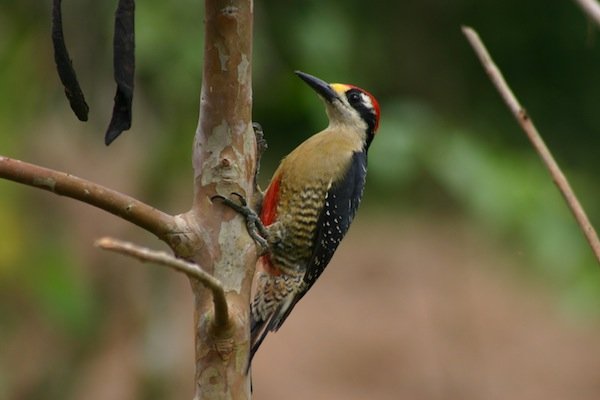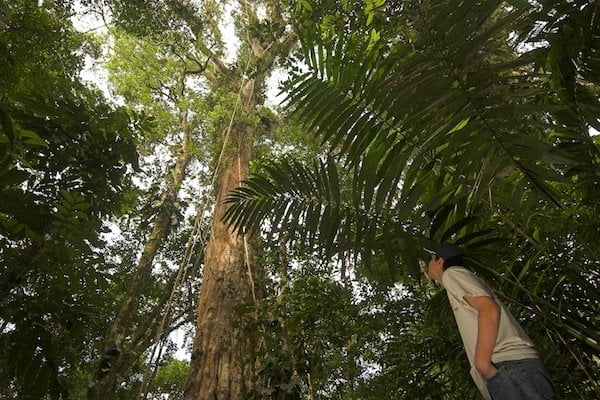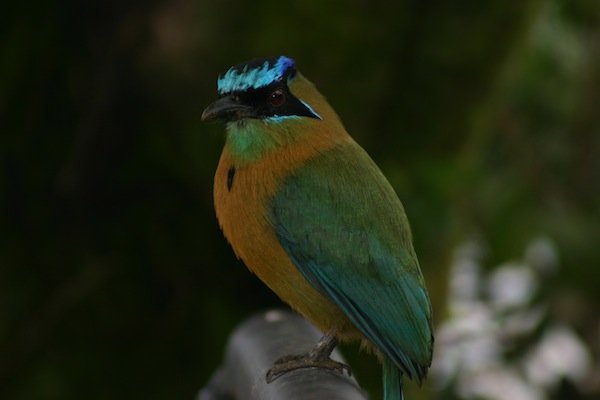The name says it all. Costa Rica. The “Rich Coast” is stuffed full of birds and has wonderful biological richness. For many US birders wanting to expand their hobby beyond the US border, Costa Rica is the first port of call. The birding locations are easily accessible, the country is safe, the infrastructure is good and the accommodations are up to par with Western standards. Very few countries can match the ease of access to multiple birding habitats. Within a few hours of San Jose you can be watching waders and shorebirds on either coast; sneaking up on Sunbitterns on one of the many rivers; quietly peering at a Resplendent Quetzal in a misty cloud forest; or crawling after antbirds and woodcreepers in tropical lowland forest. Although comparatively few endemic species are to be found in Costa Rica itself, it shares nearly 70 endemic birds with its neighbor, Panama. And there is no lack of speciality species. One of these is the Great Green Macaw, the largest parrot in central and north America.
 A close-up study of the Great Green Macaw
A close-up study of the Great Green Macaw
The area around Selva Verde Lodge on the Caribbean slope is arguably the best place in the world to see this endangered and regal species. But the entire Sarapiqui area is also one of the best birding and wildlife destinations in all of Costa Rica. The Sarapiqui is to a naturalist what Christmas is to kids. There is simply an overwhelming amount of biodiversity gifts just waiting to be discovered. For me, the best thing about birding is that its really not only about the birds. Sure, the birds are the driving force behind a decision to part with a huge chunk of hard-earned salary, run the risk of divorce, and set off to some exotic destination. But its everything else that goes with it – the people, plants, scenery and animals – that make a birding trip truly memorable.
 A walk around Selva Verde Lodge will reveal several Poison Dart Frogs like this Strawberry Dart Frog
A walk around Selva Verde Lodge will reveal several Poison Dart Frogs like this Strawberry Dart Frog
 Black-cheeked Woodpeckers are common on the Caribbean slope
Black-cheeked Woodpeckers are common on the Caribbean slope
 The butterflies, like this blue Morpho, are as beautiful as the birds
The butterflies, like this blue Morpho, are as beautiful as the birds
Although Great Green Macaws are regularly seen flying over the lodge, a better option is to seek out the trees where these giants spend the night and make their nests. I can think of few homes more befitting of an avian giant, than the Almendro Tree or the Wild Almond. To me, a suitable home needs to provide four fundamental things: shelter, food, safety and flat-screen TV. And it seems the same is true for the macaws. They get shelter from the almendros in the form of spacious hollows that are formed where massive boughs break off from the main trunk. Food comes in the form of the delectable, but seasonal, almond nuts. The trees are so tall that safety is pretty much guaranteed, given that few predators – even snakes – dare to venture that high. And although I like my flat-screen TV I’d trade it in any day for the views that the macaws have from their front doors. In fact, Great Green Macaws are so dependent on Almendro Trees that without them they would struggle to survive.
 The giant Almendro Tree or Wild Almond
The giant Almendro Tree or Wild Almond
Enter Alex Martinez…
Alex has done so much for the conservation of Great Green Macaws and has selflessly fought for the preservation of the remaining few Almendro Trees. He truly is a champion for the species. The Rainforest Biodiversity Group, in their 2005 Annual Report credits Alex for his commitment, “Our sister organization Amigos de la Lapa Verde, persisted throughout 2005 with their work to protect the Great Green Macaw and its habitat directly through patrols for illegal hunting and logging, fundraising, education, and nest adoptions. Two more nest adoptions were celebrated last year, thanks to donations from Dr. Vincent Hanlon, Tod Highsmith and Selva Verde Lodge. We want to commend Alex Martinez and the other members for their continued struggle to preserve the flora and fauna of Costa Rica, despite the limited amount of time and resources available.” As the Rainforest Biodiversity Group points out, the immediate preservation of nesting trees is of critical importance and local homesteads are paid to protect the Almendro Trees by “adopting” the trees on their land. In so doing they themselves become stewards of their natural heritage.
httpvh://www.youtube.com/watch?v=PGAf5yjnos0
Spending time with Alex looking for the Great Green Macaws was really inspiring. Conservation absolutely HAS to include people. For far too long people have been excluded from the conservation process. But its not just local people who need to be involved. I often ask myself the following question and if I may be so bold, I’d like to ask it of you too, “When last did you give back to the birds who provide you with so much joy?”














What, birders are running the risk of divorce? Who knew?! 😉
Costa Rica is a dream destination. Thanks for this grand post.
Costa Rica is without a doubt one of my favorite places in the world – I would go back in a heartbeat given the opportunity! Thanks for sharing your experiences there, with such vivid descriptions and great images and video!
costa rica my dad went there. those parrits are huge!!!!!!!!!!!!!!!!!
We’ve been to Costa Rica two and a half years ago – and it was great (we have been to Rara Avis for example – quite a rustic lodge, but right in the middle of nowhere and the rainforest). And my wife got a little bit into birding, too. She was very keen of watching resplendent quetzal and toucans, but also admired motmots and the myriads of hummers. Unfortunately, we missed Great Green Macaw at Rara Avis and just saw some semiwild Scarlet Macaws on the way to Guanacaste. But anyway, in terms of wildlife Costa Rica is a must see.
As a parrot lover, I was intrigued as I’ve never heard of a “Great Green Macaw”. Turns out their scientific name is Ara ambiguus and they are also known as the Buffon’s macaw or the military macaw.
Great post and thanks especially for talking about the hard work that Alex Martinez has done to help conserve such an emblematic species. Although in my opinion I would say that the “Lapa Verde” is easiest to see in the Maquenque Reserve in the northern part of the country, Sarapiqui is certainly more accessible. I had the pleasure of watching some of these fantastic birds around Laguna del Lagato this past weekend and will hopefully see more (along with Sunbittern) while guiding in Sarapiqui in a few days time.
I personally know Alex Martinez and the people at Selva Verde. They all work to protect this endangered bird. I had the pleasure of seeing more than 10 together on a recent trip. This is one of those birds that will benefit from captive reproduction and re-introduction just like the Scarlet macaw and the Hyacinth. I think it’s time. We have many of those in the US, perhaps somebody wants to get a breeding project going.
Header Post:
The Great Green Macaw is larger than it’s cousin the Military macaw (Ara militaris)